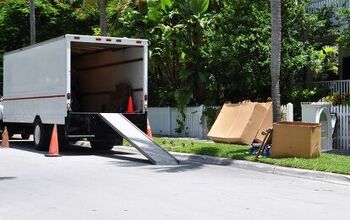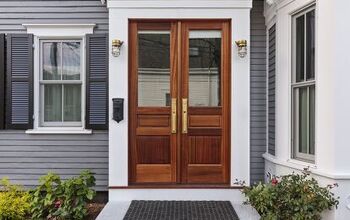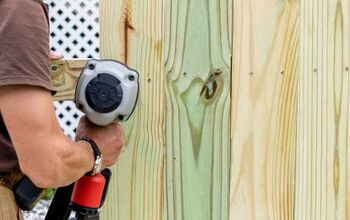Do You Need A Permit To Drill A Well? (Find Out Now!)

Drilling a well allows you to extract natural resources from the ground. Generally, when people talk about wells, they refer to water wells that extract groundwater for regular use. The process of drilling a well can be a labor-intensive one, and it’s also highly regulated.
You’ll need a permit to drill a well and a professional to complete the work in most locations. Depending on the state you live in, you may need to file an application for approval before drilling a well. Contact your county’s building or health department to determine all regulations and special procedures regarding well drilling in your area.
Read on to learn more about the permits and applications needed to drill a well. We’ll also talk about the cost of drilling a well, and then we’ll provide an overview of the process.
Do You Need a Permit Service?
Get free, zero-commitment quotes from pro contractors near you.

Is A Permit Needed To Drill A Well?
In most locations, you’ll need a permit to drill a well, plus a qualified professional to complete the work. Drilling a well requires specialized equipment and adherence to certain safety regulations. Always contact your county’s building department or health department to determine whether you’ll need a permit.
Some locations require you to get a permit and also put in an application to the state. In some parts of the country, groundwater isn’t plentiful, and so any new wells must be approved before drilling begins. If water is scarce, there’s a chance the state may deny your application.
Regulations And Special Procedures
Some of the regulations that affect well drilling include accepted well casing materials and grouting methods. There are also factors like using approved well caps and sticking to certain casing heights above the ground surface. Casing depths into bedrock and the abandonment of existing wells are other regulated aspects of well drilling.
In some areas, there are also special procedures that affect well drilling. These procedures usually address contamination risks, seasonal weather changes in frost zones, and geologic conditions like limestone and karst.
What Is Included In A Well Drilling Application?
Some states require you to file an application before drilling a well. Here are some of the things that are normally included in a well drilling application. (Note that this can vary from state to state.)
- Information on the applicant or property owner, like their name, address, and contact information
- The property address
- The property ID or parcel number, which you can find on tax bills
- The legal description of the property
- A legal survey, which you can find in closing documents or on file at the county office
- The well contractor’s name and contact information
- Information on the proposed well, including the size, casing type, drilling method, and expected depth
- The site plan
What Does A Site Plan Consist Of?
A site plan is created to show officials the current state of the property. It also shows the proposed location for the well you want to drill.
Site plans display the location of multiple factors on the property:
- The proposed well
- The building or home that the proposed well will serve
- The driveway
- The system pipes, septic tank, and drain field
- Any nearby bodies of water
- Nearby roads
- The scale of the site plan
There are various regulations requiring the well to have a specific minimum distance from bodies of water. This also applies to nearby roads and the home’s septic system. The site plan should display that all of these requirements have been met.
How Much Does Drilling A Well Cost?
Depending on where you live, the cost of drilling a well can vary quite a bit. The average cost of drilling a well in the United States is $5500. This figure refers to the average 150-foot well.
In general, drilling a well can run you anywhere from $1500 up to $12,000. If you live on difficult terrain, you may pay as much as $50 per foot of depth. However, the average for normal terrain is between $15 and $30 per foot.
The Process Of Drilling A Well
Below, you’ll find an overview of the well-drilling process.
Step 1: Choose The Location
During the initial consultation, a contractor will come to your property and identify the best location for the well.
Step 2: Drill The Well
After the consultation, drilling contractors use various tools to drill deep into the ground. The average well is around 100 to 150 feet deep. This step cannot take place until the proper permits and applications have been approved.
Step 3: Install The Casing
After the well is drilled, the casing is installed. This is a long plastic or metal tube that measures four to six inches across. It spans from the ground’s surface down to the aquifer or the groundwater supply. Then, the casing is sealed using a well cap.
Step 4: Add The Screens
Well screens are placed at the base of the casing. Screens provide an extra layer of filtration and protect the water from sediment and dirt.
Step 5: Fill Gaps With Grout
Often, there will be a gap between the casing and the wall of the hole. The contractors fill this gap with grout.
Step 6: Clean And Develop The Well
At this point, contractors use air and water to remove excess sediment from the bottom of the well.
Step 7: Install The Well Pump
Lastly, the contractors install the well pump and pressure tank. They also complete a water quality test before you can use or drink water from the well.
Do You Need a Permit Service?
Get free, zero-commitment quotes from pro contractors near you.

Related Questions
Is drilling a well tax-deductible?
Drilling a well is considered a land improvement. Generally, you can deduct land improvements from your taxes. They must cost less than $10,000 or two percent of the unadjusted basis of your home to be tax-deductible.
Does homeowners insurance cover well drilling?
Homeowners insurance may cover well drilling, depending on the reason you’re drilling a well. For instance, if you’re drilling a well due to a covered issue like fire damage, then insurance may cover it.
What does drilling a well cost?
For the drilling process only, the cost is $15 to $25 per foot. The entire installation process is more expensive, costing up to $100 per foot.

With a lifelong passion for writing plus strong enthusiasm for home improvement and DIY projects, joining the team at Upgraded Home was an easy choice. Jessica Allen likes to share helpful information with current and aspiring homeowners. Aside from writing, Jessica loves doing yoga, playing the piano, and dabbling in graphic design.
More by Jessica Allen


















![How To Reset A Whirlpool Cabrio Washer [In 5 Easy Steps!]](https://cdn-fastly.upgradedhome.com/media/2023/07/31/9076531/how-to-reset-a-whirlpool-cabrio-washer-in-5-easy-steps.jpg?size=350x220)








